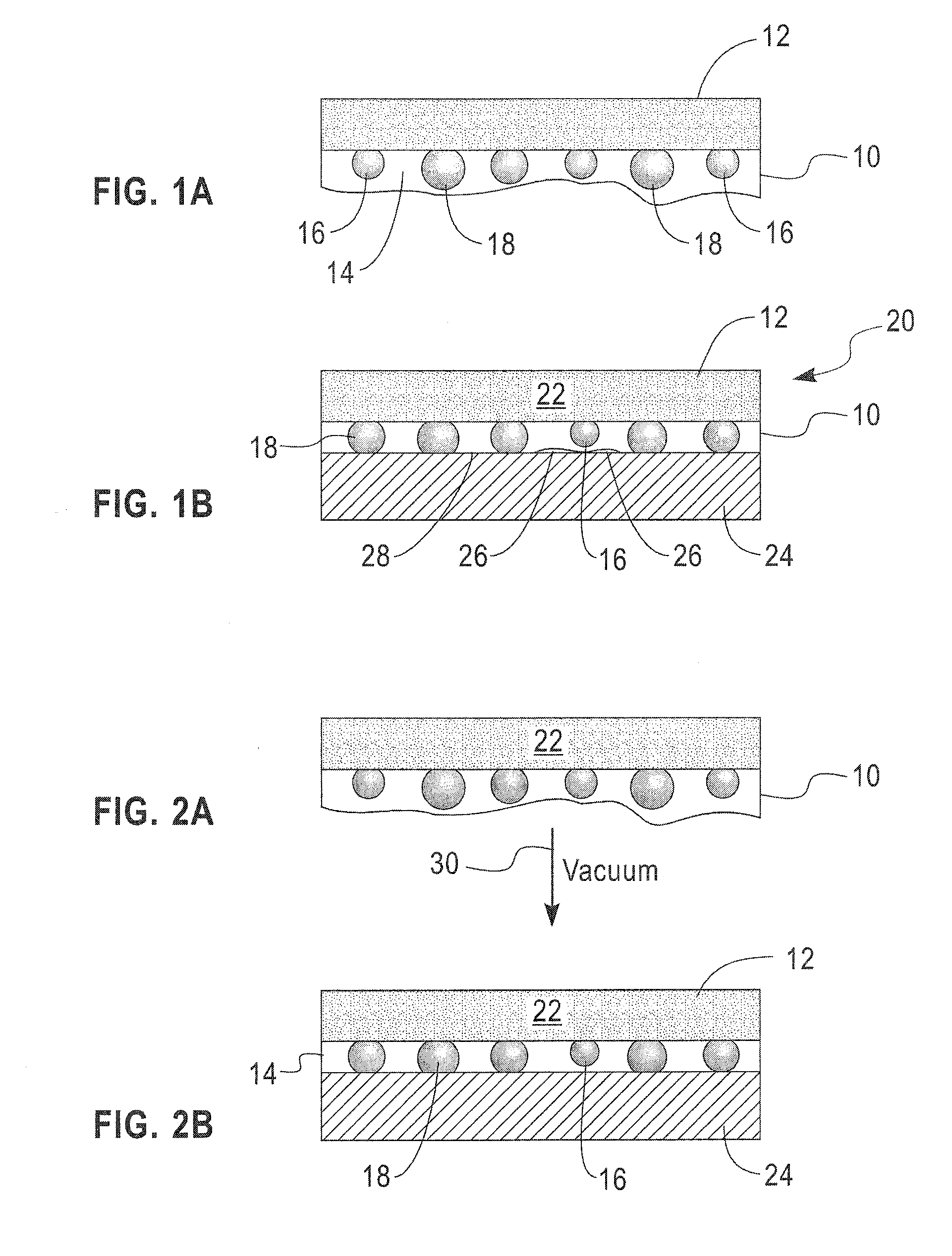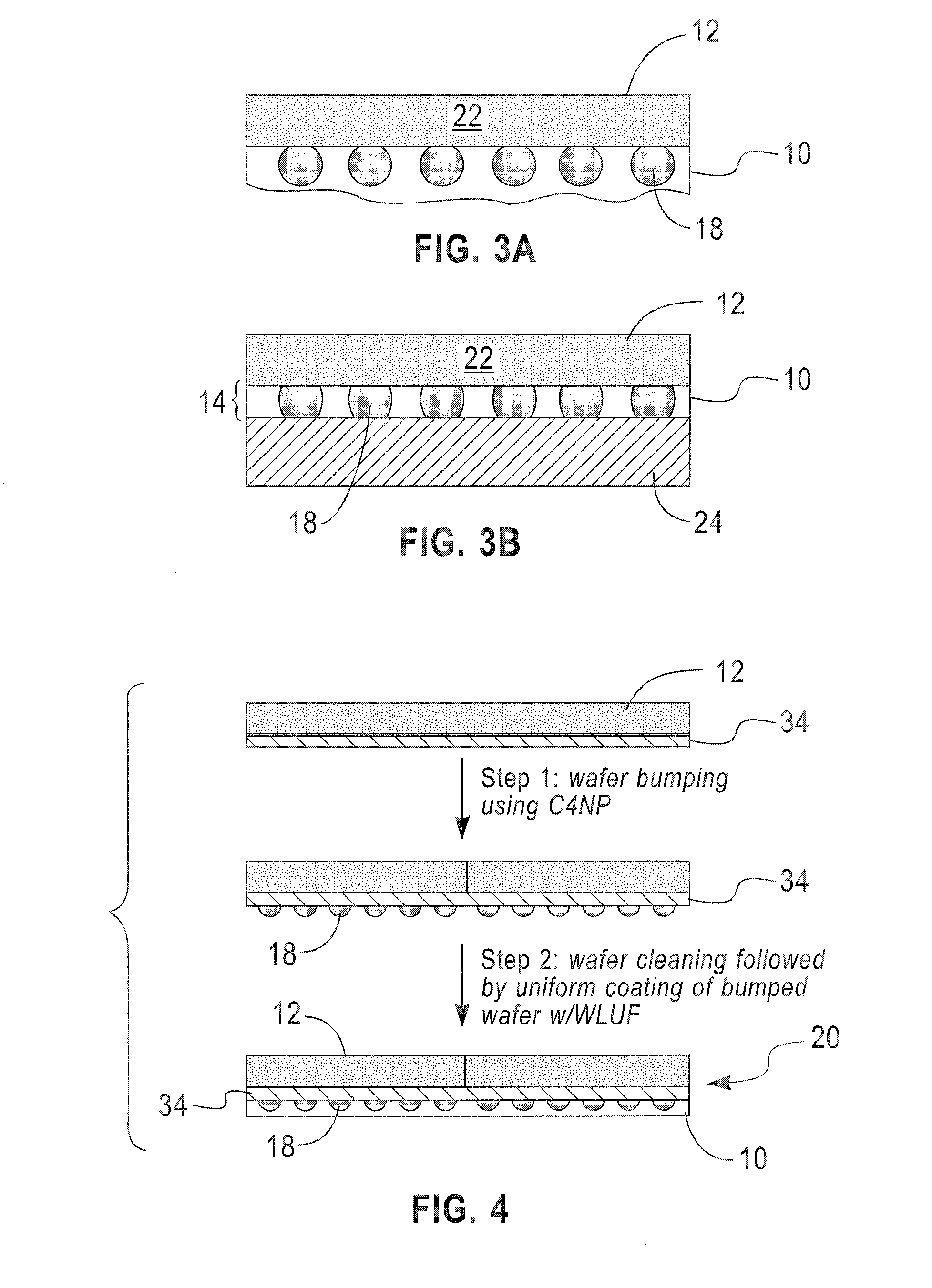Wafer-level underfill process using over-bump-applied resin
a technology of underfill and wafer, which is applied in the direction of electrical equipment, semiconductor devices, semiconductor/solid-state device details, etc., can solve the problems of difficult cleaning step and limited reliability of the package containing the underfill, and achieve excellent underfill adhesion, improve the wluf process, and facilitate the thickness of the wluf material
- Summary
- Abstract
- Description
- Claims
- Application Information
AI Technical Summary
Benefits of technology
Problems solved by technology
Method used
Image
Examples
Embodiment Construction
[0035]Throughout the several drawing views, elements and structures which are similar or identical to each other, will be designated with the same reference numerals.
[0036]Referring in specific detail to the drawings, the inventive over-bump wafer-level underfill process requires that the WLUF (wafer-level underfill) material 10 is applied to a fully bumped wafer 12 so that a layer 14 of the WLUF material covers the solder bumps 16, 18. If the WLUF layer 14 is uniform and flat, irrespective if the solder bumps 16, 18 are different in size, and does not show large peaks and valleys, little or no air is entrapped during the subsequent joining of singulated WLUF coated chips to substrates. Air entrapment is undesirable since it reduces the reliability of the finished semiconductor package 20.
[0037]Plated bumps 16, 18 tend to exhibit significant bump height variations, as shown in FIG. 1a. When a WLUF material coats wafers 12 with such plated bumps 16, 18 and chips 22 obtained from such...
PUM
 Login to View More
Login to View More Abstract
Description
Claims
Application Information
 Login to View More
Login to View More - R&D
- Intellectual Property
- Life Sciences
- Materials
- Tech Scout
- Unparalleled Data Quality
- Higher Quality Content
- 60% Fewer Hallucinations
Browse by: Latest US Patents, China's latest patents, Technical Efficacy Thesaurus, Application Domain, Technology Topic, Popular Technical Reports.
© 2025 PatSnap. All rights reserved.Legal|Privacy policy|Modern Slavery Act Transparency Statement|Sitemap|About US| Contact US: help@patsnap.com



